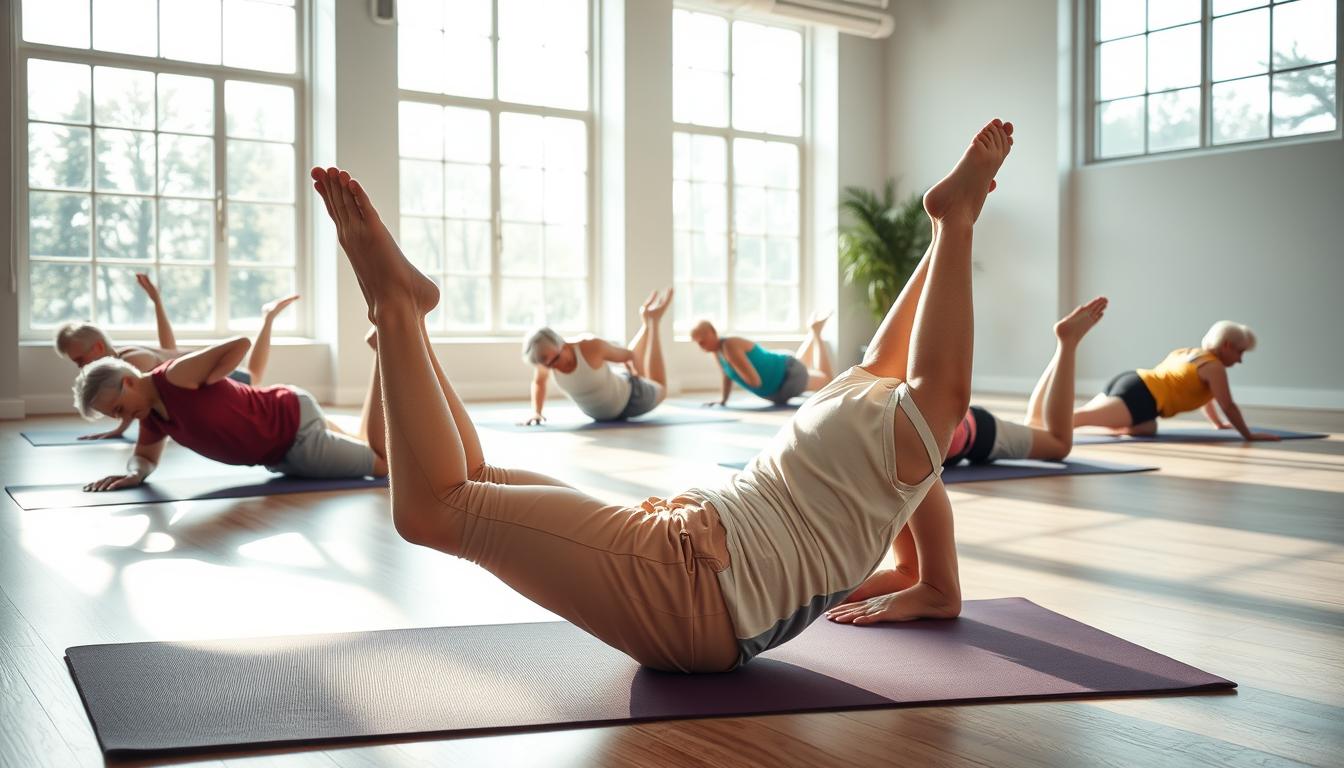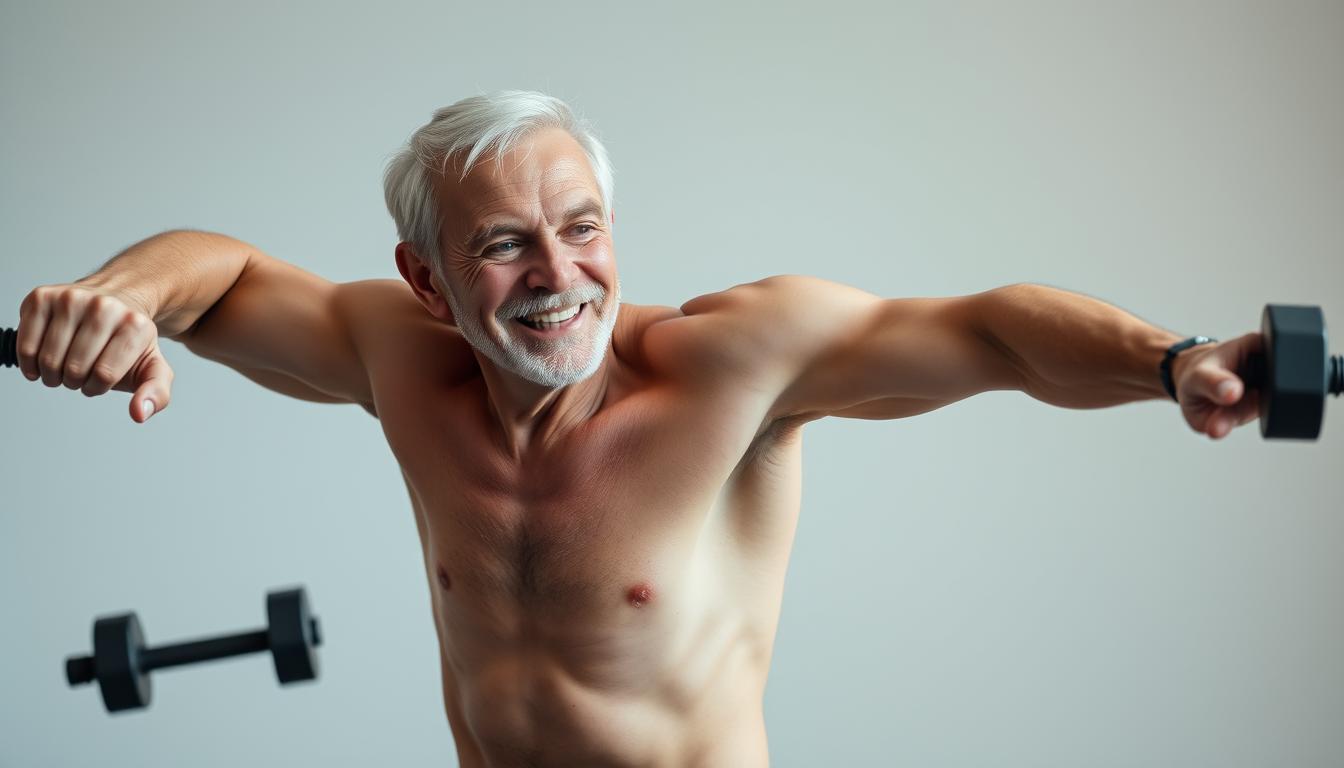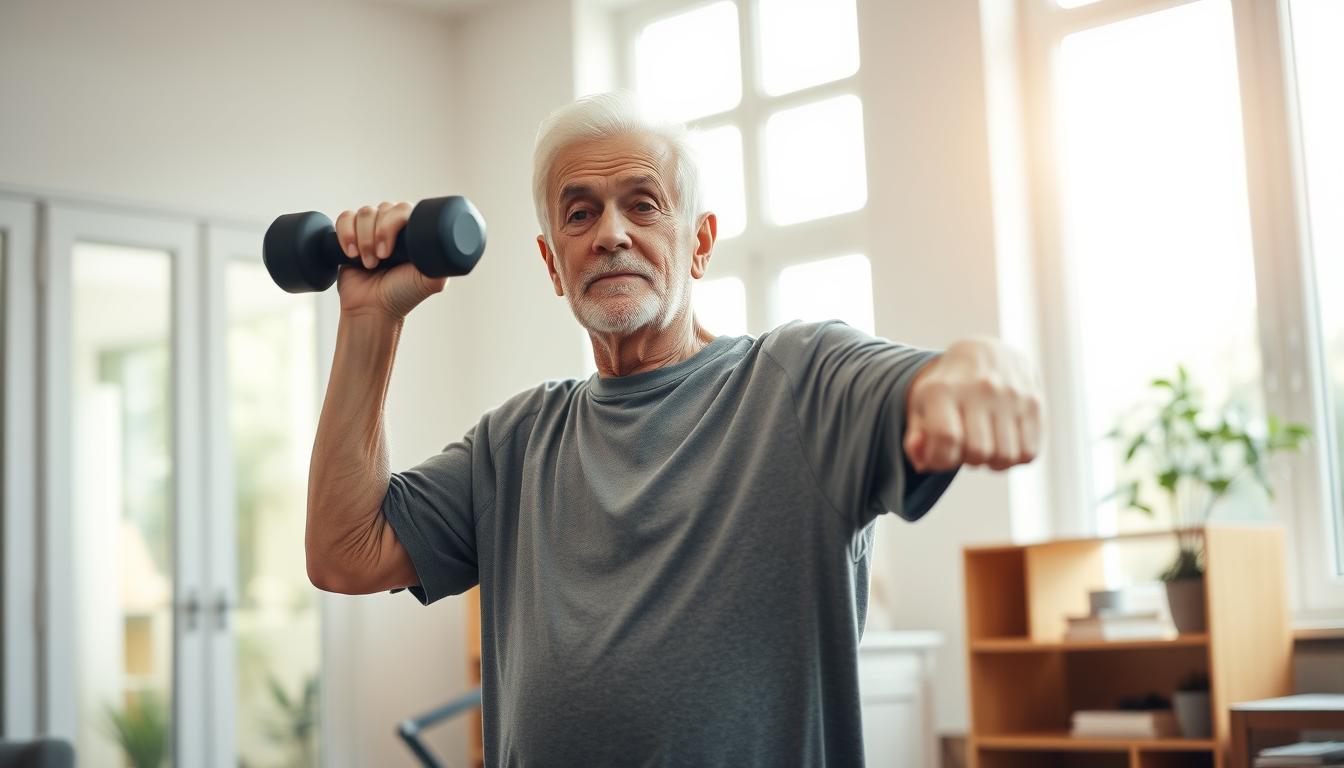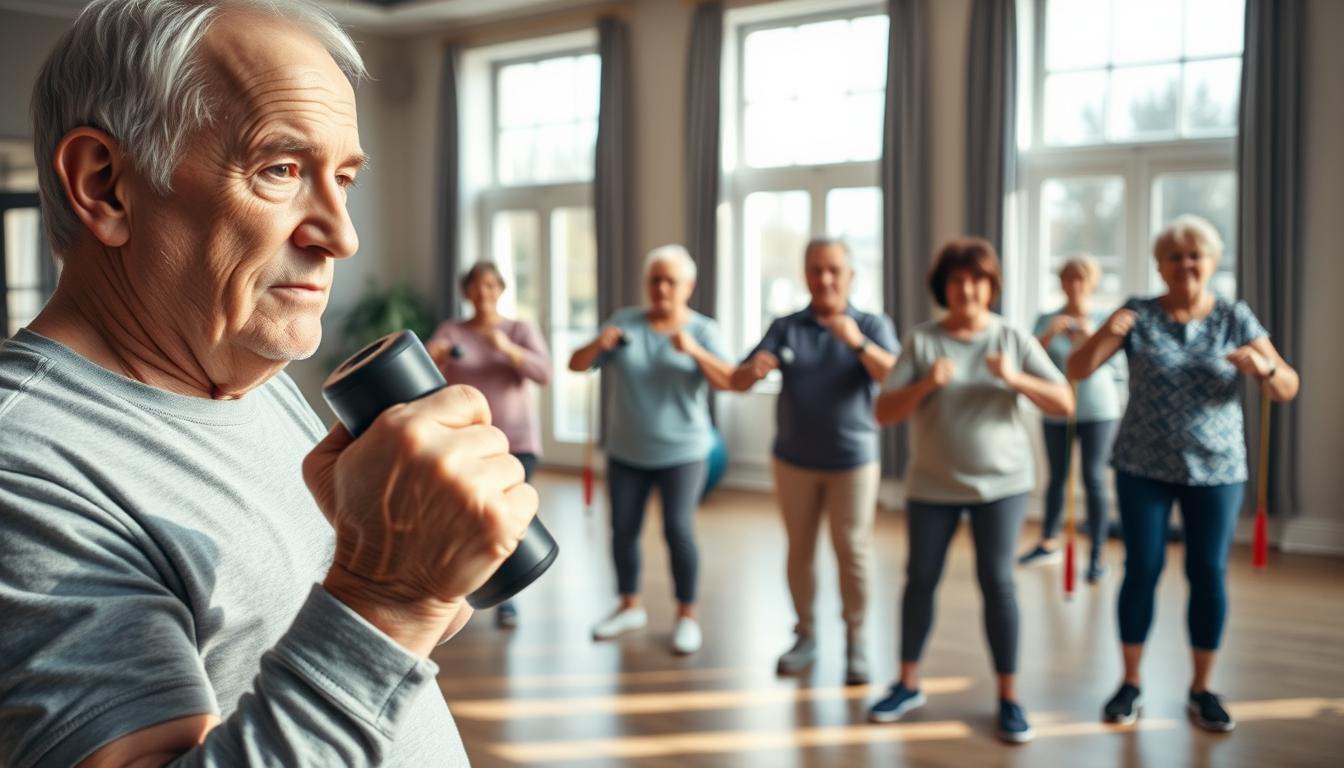Want to stand taller, move easier, and ditch that nagging lower back ache? Your midsection holds the key—no kidding. A strong core isn’t just about crunches; it’s your body’s built-in support system for everything from bending to grab groceries to laughing without wincing. Let me tell you, as someone who’s seen this firsthand: neglect your center, and your whole body pays the price.
Think of your core muscles like a corset wrapped around your spine. When they’re weak, even simple tasks—like getting out of a chair—feel like climbing Everest. But here’s the kicker: you don’t need fancy equipment or marathon gym sessions. Modified planks (yes, on your knees!) and bridges (the kind you do lying down, not crossing rivers) can work wonders. Seriously, my 70-year-old neighbor swears by these—she’s now gardening pain-free and chasing her grandkids.
Why does this matter? Your core is the engine for every movement. It keeps you steady when you reach for a top shelf, stable on uneven sidewalks, and—let’s be real—prevents those “oh no” moments when you stand up too fast. And here’s the best part: strengthening these muscles isn’t about turning into a fitness influencer. It’s about living life on your terms, whether that’s traveling, dancing, or finally tackling that closet reorganization.
Ready to turn your midsection from a liability into your greatest ally? Stick around. I’ll show you exactly how to activate those muscles safely, with moves so practical you’ll wonder how you ever settled for just “sitting up straight.” Spoiler: Your future self will thank you.
Why a Strong Core Matters for Aging Bodies
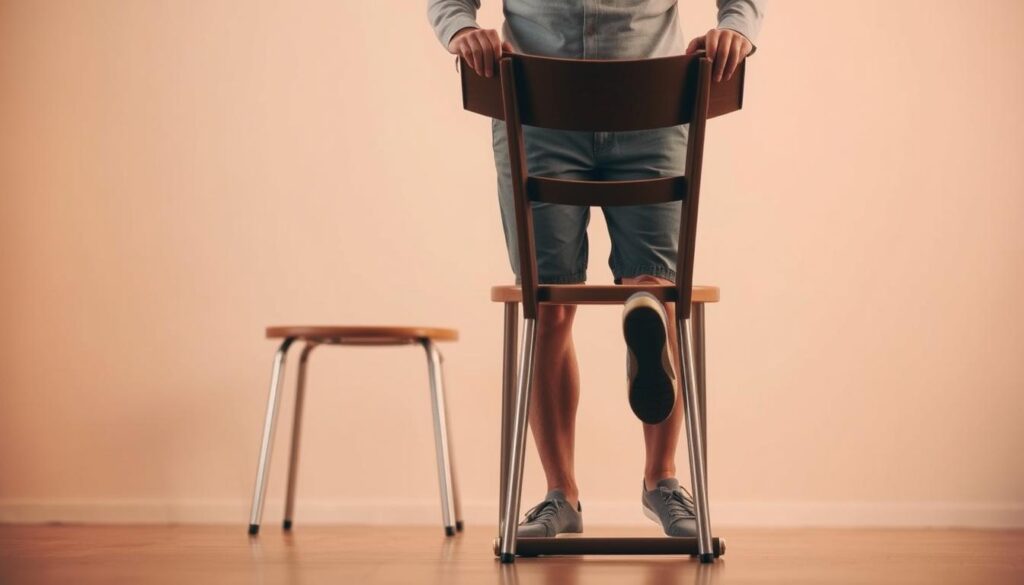
Here’s a secret: your daily comfort hinges on muscles you rarely think about. Those muscles? They’re the reason you can grab that cereal box from the top shelf without doing the “old-person shuffle.” Believe it or not, research shows folks with stronger midsections have 30% fewer balance issues during routine tasks. That’s huge when you’re facing uneven sidewalks or slippery floors.
Supporting Daily Movements and Upright Posture
Let’s talk chairs. Ever notice how some people pop up like toast while others groan like rusty hinges? It’s all in the knees and feet. Planting your feet firmly on the floor and pushing through your heels—that’s your core working overtime. And when you reach sideways for the TV remote? That’s your obliques saying, “We’ve got this,” keeping your spine aligned instead of crumpling like a cheap lawn chair.
Here’s the kicker: weak arm muscles can trick you into hunching. But keep those arms slightly engaged (not tense!) during movements, and suddenly carrying groceries feels lighter. It’s like having invisible spotter hands under your elbows—you know what I mean?
Preventing Falls and Handling Pain the Smart Way
Falls aren’t just about slippery floors. They happen when your side muscles forget to fire during quick turns. Picture this: stepping off a curb while chatting. Strong core? You adjust smoothly. Weak core? Hello, pavement. Studies prove targeted movements reduce fall risk by 40% in adults over 65—no joke.
And pain? Let’s get real. Those achy knees during gardening? Often traced to lazy hips and a sluggish midsection. Work on stability exercises (think: seated side bends using a chair arm), and suddenly kneeling to plant tulips feels… possible. Even enjoyable. Who’d have thought?
Core Strength Exercises for Seniors: Step-by-Step Techniques
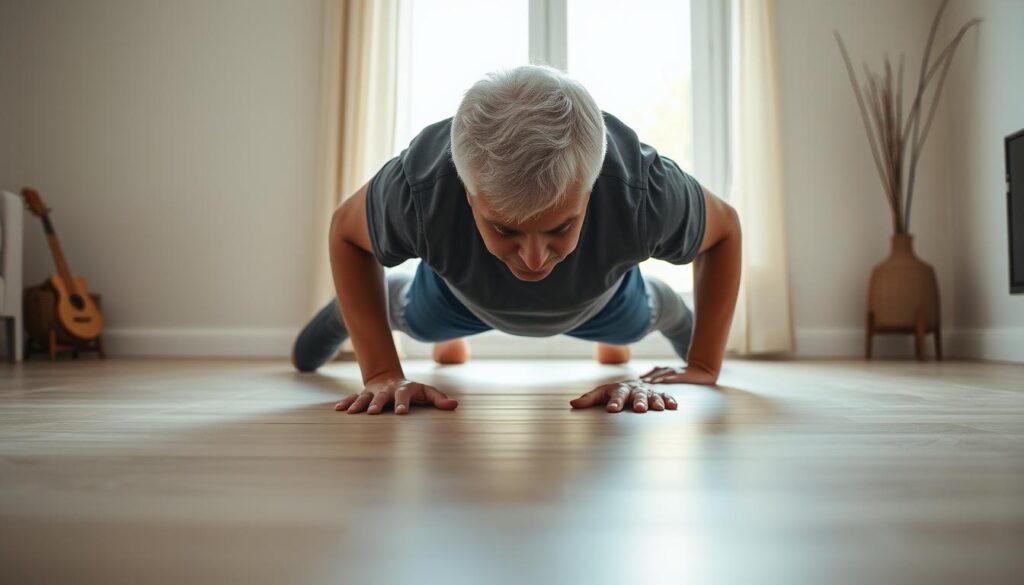
Let’s roll up our sleeves and get moving—safely and smartly. These moves aren’t about breaking a sweat or counting reps like a drill sergeant. They’re your ticket to feeling steadier during daily tasks, whether you’re reaching for a coffee mug or chasing grandkids. Trust me on this: small efforts add up fast.
Modified Plank, Bridge, and Leg Lift Variations
Start with the modified plank. Kneel on a mat, place your elbows under your shoulders, and lift your hips until your body forms a straight line. Hold for 5-10 seconds—no need to be a statue. Breathe! This fires up those deep muscles without straining your back. You’ll get it.
Next, bridges. Lie on your back, knees bent. Press through your heels to lift your hips, squeezing your glutes. Lower slowly. Do this 8-10 times. It’s like building an invisible bridge between your hips and spine—corny, but effective.
For leg lifts: Lie on your side, head propped on your hand. Lift the top leg slightly, keeping toes pointed forward. Switch sides after 6 reps. This sneaky move targets your obliques and improves lateral balance. No wobbling required!
Superman Pose and Seated Side Bends in Action
Superman pose sounds intense, but here’s the trick: Lie face-down, arms extended. Lift your right arm and left leg an inch off the ground. Hold 3 seconds, then switch sides. It’s like playing superhero without the cape—just pure stability work.
Seated side bends? Sit tall, feet flat. Reach your right arm overhead and lean left. Feel that stretch along your sides? Do 5 reps per side. This isn’t just stretching—it’s teaching your body to move smoothly in all directions. And hey, it doubles as a great “I’m thinking” pose during phone calls!
Remember: Keep movements controlled, especially around your elbows and shoulders. Quality beats quantity every time. Before you know it, these core exercises will feel as natural as brushing your teeth—minus the minty freshness.
Customizing Movements for Your Body and Comfort
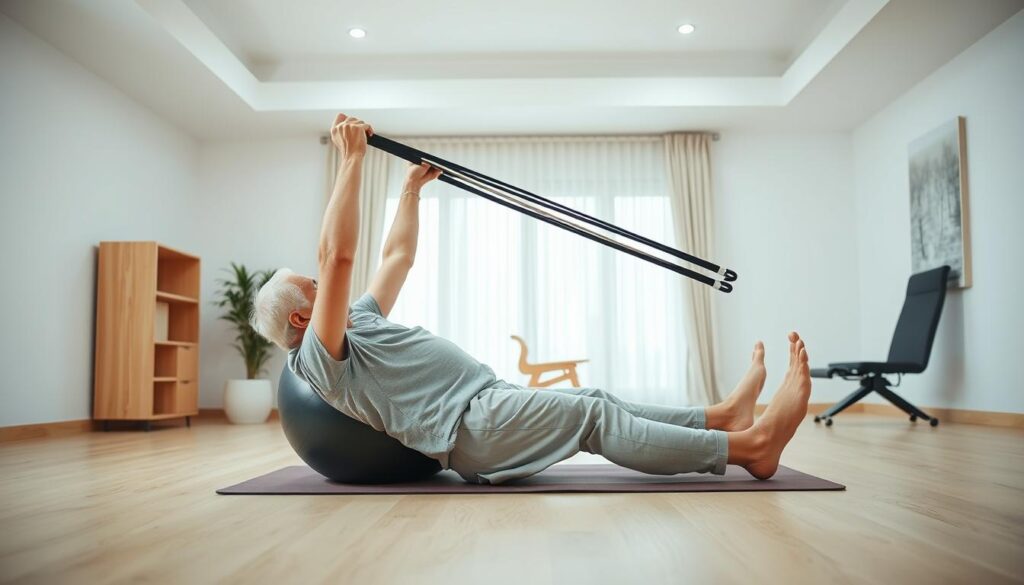
Ever tried squeezing into jeans two sizes too small? Yeah, that’s what forcing generic exercises feels like. Your workout should fit you—not the other way around. Research shows 78% of older adults stick with routines when they’re tailored to their needs. You bet we’re making that happen today.
Seated and Standing Alternatives Without the Fuss
Let’s talk chairs. Sitting tall with feet flat isn’t just for good posture—it’s your secret weapon. Engage those abdominal muscles by imagining zipping up a snug jacket. Hold that position while reaching overhead. Feel that? Your lower back stays protected while your midsection does the heavy lifting.
Standing moves got you wobbly? Lean against a counter. For leg lifts, keep one hand on support and knees bent slightly. It’s like having training wheels—steady enough to focus on form without the “oh-crap-I’ll-fall” panic.
| Position | Focus Area | Modification Tip |
|---|---|---|
| Seated Side Bends | Obliques | Use chair arms for balance |
| Standing Leg Lifts | Hip Stabilizers | Touch wall for support |
| Modified Plank | Deep Core | Elevate hands on sturdy chair |
Floor work not your jam? No sweat. Swap planks for seated marches—lift knees alternately while pressing palms into thighs. Your abdominal muscles still fire up, but your lower back stays happy on a flat floor or cushion.
Remember: Adjustments aren’t cheating. They’re smart tweaks for older adults who value safety as much as results. Whether you’re holding positions at the kitchen counter or perfecting seated twists, every move counts. Now go own that workout—your way.
Getting Your Form Right and Dodging Injury
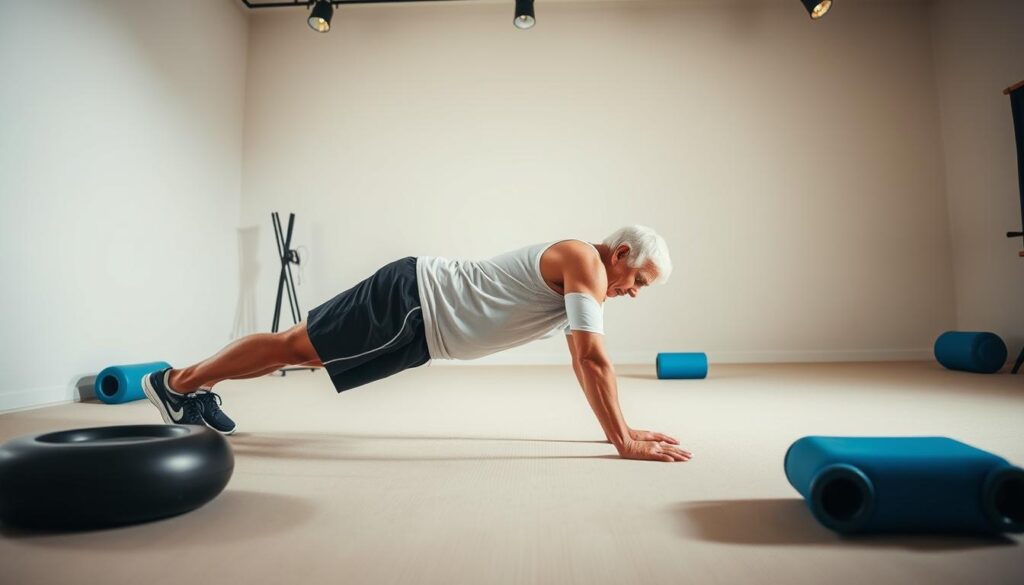
Ever caught yourself holding your breath during a workout? Yeah, we’ve all been there. Proper form isn’t about perfection—it’s about working smarter. Get this wrong, and you’re one misaligned move away from tweaking your back. Get it right? You’ll build stability that sticks around long after the exercise ends.
Engaging Abdominal and Lower Back Muscles Effectively
Let’s break down the bridge exercise. Lie on your back, knees bent. Press through your heels—not your toes—to lift your hips. Squeeze your glutes like you’re holding a dollar bill between them. This simple shift protects your lower back while firing up those deep core muscles. No kidding—studies show this alignment reduces spinal strain by 27% compared to sloppy form.
For modified planks: Keep your right arm aligned under your shoulder, fingers spread wide. Your legs? Should feel like coiled springs, not limp noodles. This position turns your body into a power line—energy flowing from hands to hips without sagging or arching.
Using Chairs and Floor Options to Stay Safe
Chairs aren’t just for sitting. Try this: Place both hands on the seat while standing behind it. Step back until your arms are straight. Now lower your chest toward the chair—that’s a safe push-up variation. Your back stays neutral, and your core does the heavy lifting.
Floor work got you nervous? Start seated. Cross your arms over your chest and lean back until you feel your abs engage. Hold 5 seconds. This “almost-falling” trick activates your core without risking a tumble. Smart, right?
| Exercise | Common Mistake | Quick Fix |
|---|---|---|
| Bridges | Arching lower back | Tuck pelvis slightly |
| Side Leg Lifts | Letting hips roll forward | Press top hand into floor |
| Seated Twists | Over-rotating shoulders | Move from ribs, not arms |
Remember: Your hands should support, not carry your weight. Whether they’re on the ground or gripping a chair, keep fingers active and wrists straight. Adults over 60 who focus on these details report 52% fewer exercise-related strains—now that’s worth paying attention to.
Merging Core Workouts with Your Daily Routine

Who says fitness has to live in a gym? Your living room, kitchen counter, and even that comfy recliner can become movement hubs. I’ve found that weaving core work into daily tasks creates habits that stick—no willpower required. Believe it or not, standing while folding laundry offers prime opportunities to engage your hips and spine.
Mixing It Up to Keep the Momentum and Smarts
Try this: Lift one knee slightly while brushing your teeth. Hold for 5 seconds, switch sides. You’re not just fighting plaque—you’re activating those deep core muscles. It’s like multitasking for your fitness goals. Bonus? Your hips stay mobile without carving out extra time.
Here’s another trick. Waiting for coffee to brew? Stand tall, press palms against the counter, and lean back until your spine straightens. Hold 10 seconds. This simple move strengthens your front muscles while improving posture. For real—it works while your caffeine fixes itself.
| Daily Task | Core Benefit | Time Required |
|---|---|---|
| Brushing Teeth | Hip Stability | 2 minutes |
| Watching TV | Seated Twists | Commercial Breaks |
| Cooking | Standing Marches | While Stirring |
Starting is easier than you think. Next time you reach for a top shelf, pause mid-movement. Engage your midsection before lifting—your spine will thank you later. These micro-moments add up faster than you’d guess.
Keep it fresh by rotating three simple movements weekly. Monday: countertop planks during news updates. Wednesday: seated side bends during phone calls. Friday: heel lifts while washing dishes. Consistency beats intensity every time—and your fitness journey stays as dynamic as your life.
Wrapping Up: Your Path to a Stronger, More Confident Core
Let’s be honest—your best adventures don’t happen sitting down. Whether you’re reaching for a grandkid’s toy or navigating a crowded aisle, that hip-to-shoulder connection matters. Seriously though, nailing movements like modified planks with elbows stacked under shoulders isn’t just about fitness. It’s about rewriting what’s possible at your kitchen table or garden bench.
Think about the stability you gain when keeping feet flat on the floor during seated twists. Or how bending your back knees slightly during standing marches protects your joints. These tweaks aren’t random—they’re battle-tested by folks who’ve turned stiff mornings into fluid days.
If you ask me, the real magic happens when torso control meets daily life. Maybe you’ll notice easier breathing while lifting groceries. Or steadier hands pouring coffee. That’s your body saying, “Thanks for the upgrade.”
Start small. Try one core exercise seniors favorite this week—maybe bridges with hips lifted just enough to feel engagement. Then build from there. Your journey to confident movement isn’t a race. It’s a series of smart choices adding up to a life lived fully upright.
